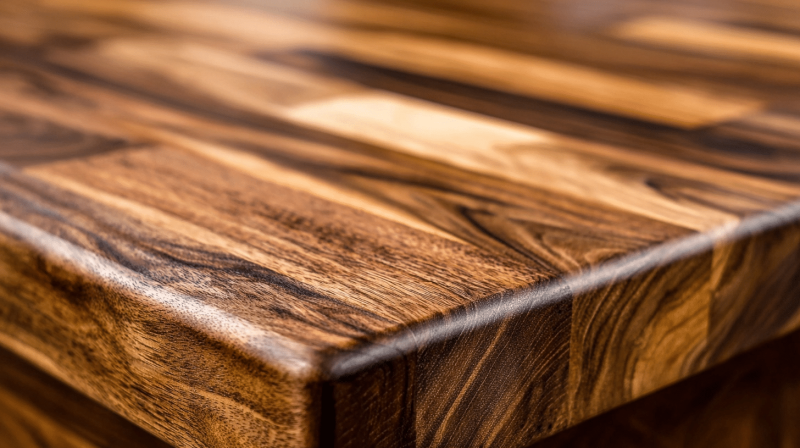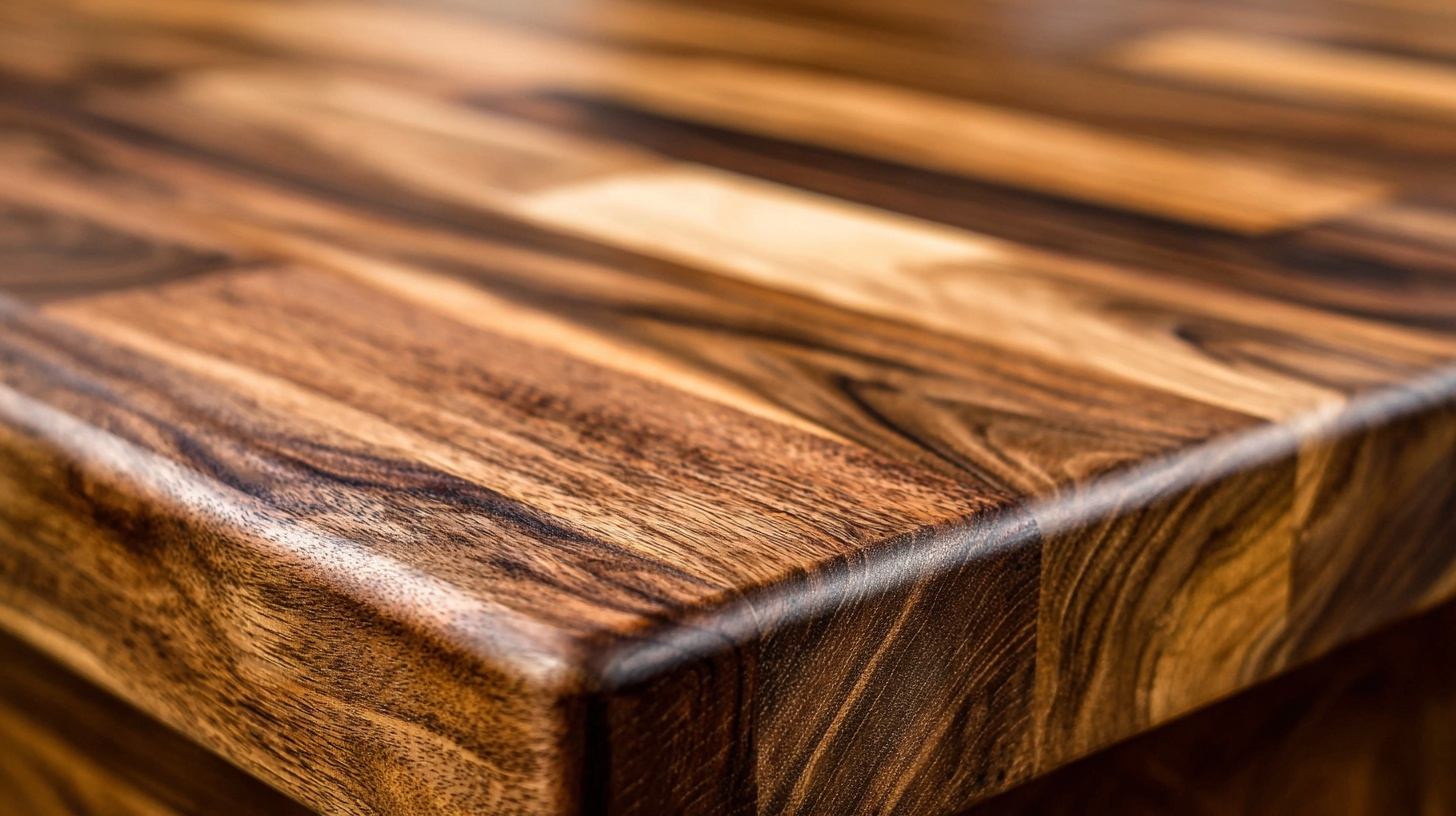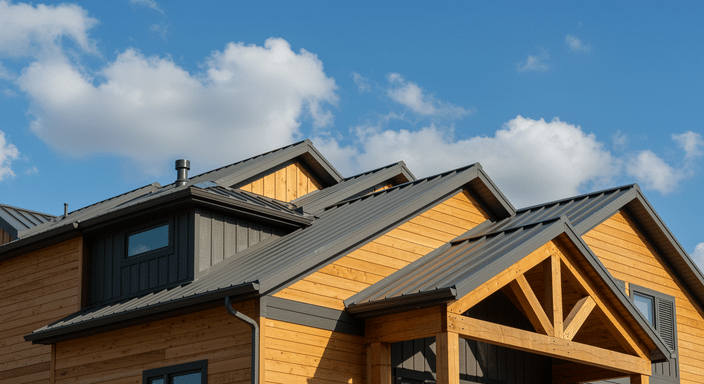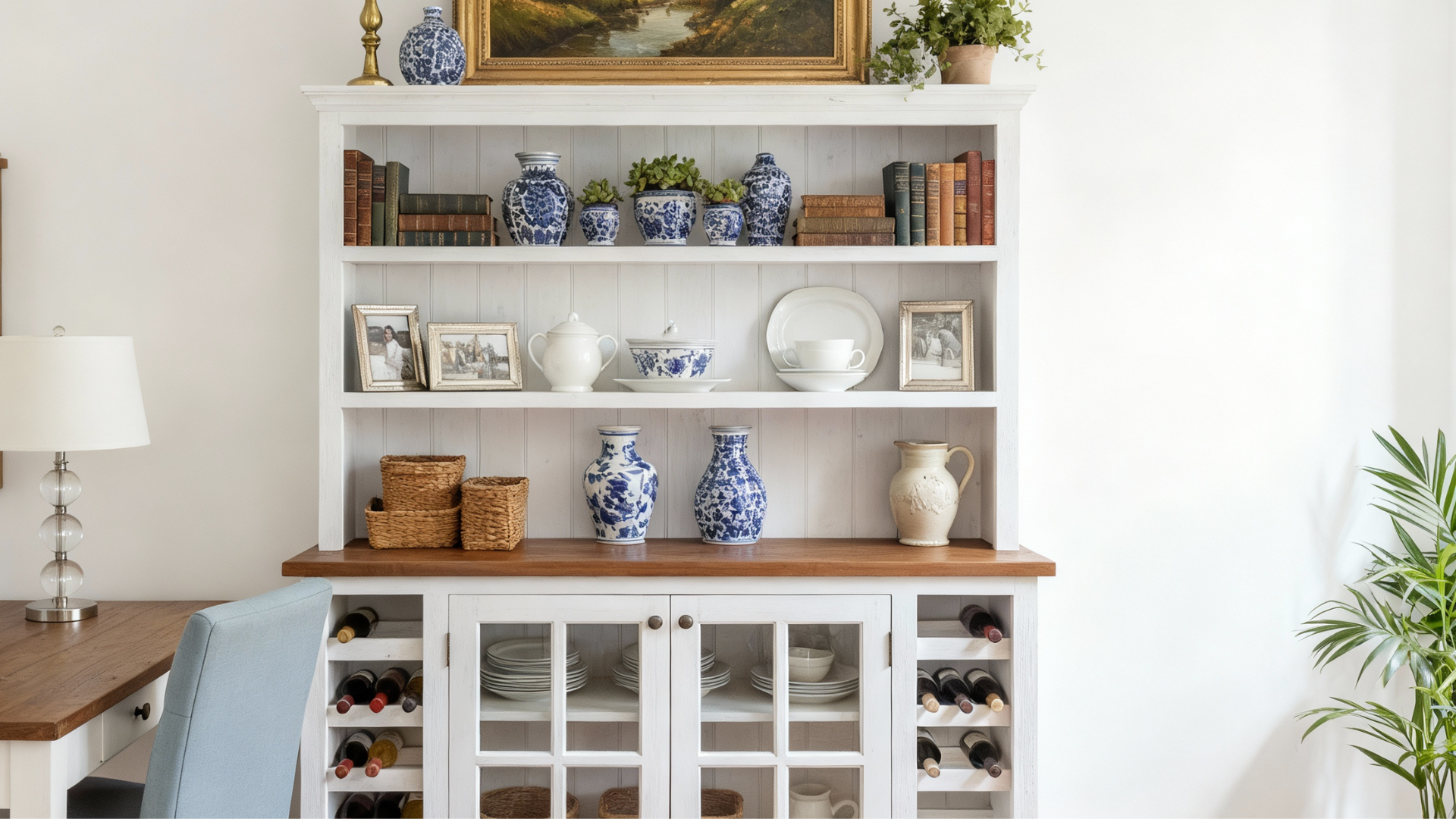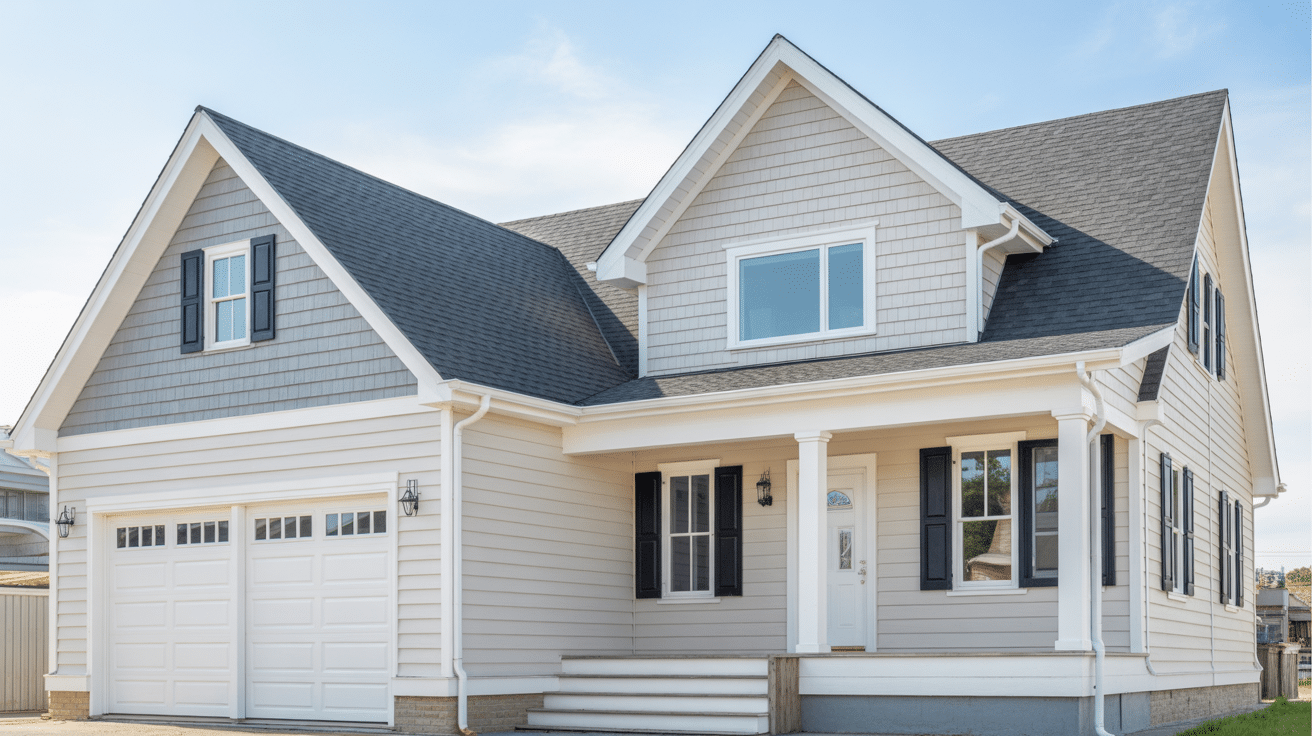For their kitchen, people want something that looks good, works hard, and doesn’t cost a fortune.
Butcher block countertops offer a warm, natural option that many find appealing. But are they the right fit for everyone?
This blog breaks down the different butcher block countertops and their pros and cons. You will learn about maintenance needs, cost factors, and durability concerns.
What are Butcher Block Countertops?
Butcher block countertops are wood surfaces made from strips of hardwood glued together. They create a natural look in kitchens.
Common woods include maple, oak, walnut, and cherry.
The wood strips can run horizontally or vertically, depending on the style you want. These countertops bring rustic charm to modern spaces.
They’re durable when maintained properly, plus they’re functional work surfaces for food prep.
Types of Butcher Block Countertops + Pros and Cons
Trust me when I tell you, but these countertops might now be perfect for everyone. Understanding different types helps homeowners make better choices.
1. Edge Grain Butcher Block
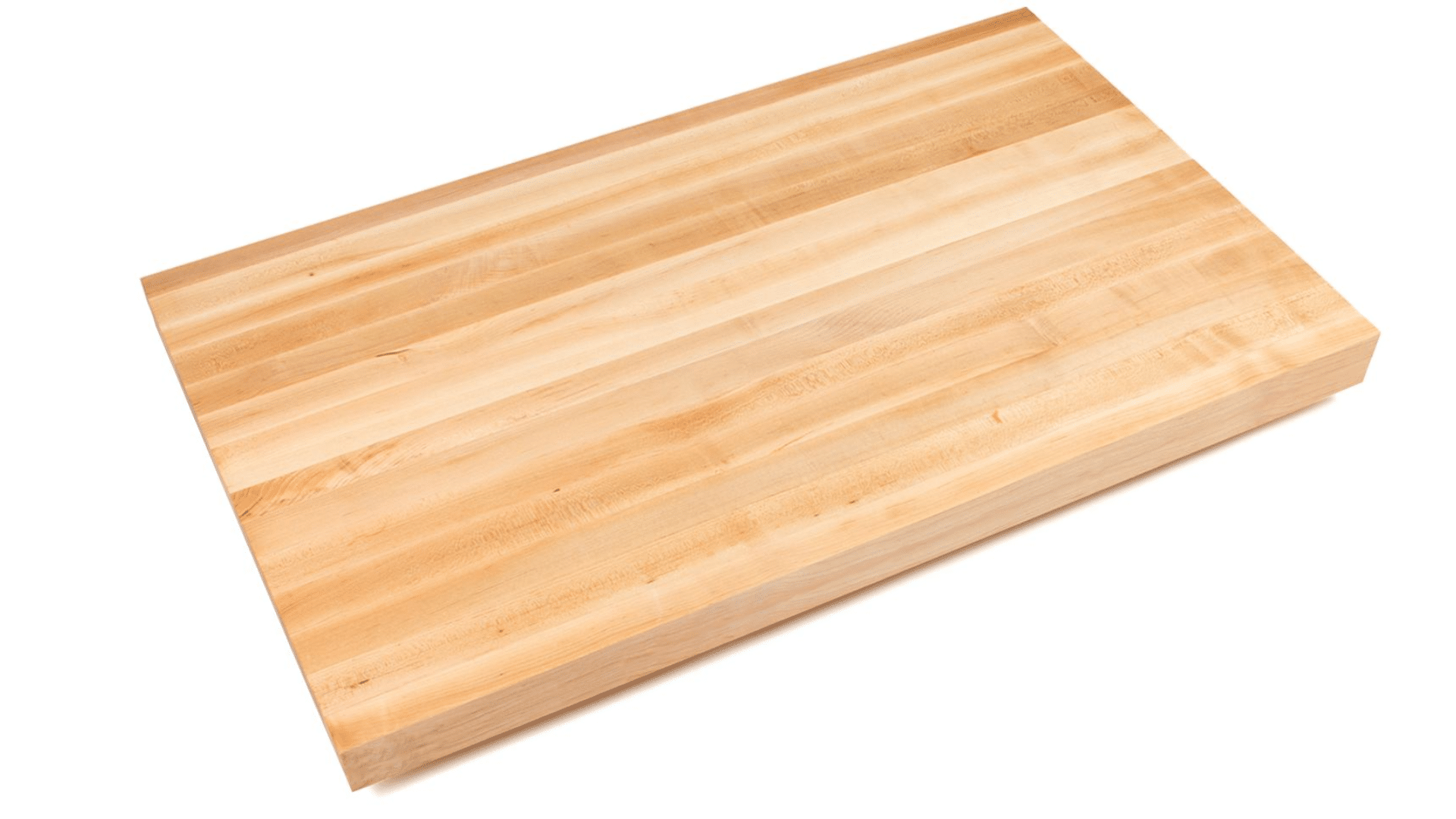
Edge-grain construction places wood strips on their sides, showing the narrow edge of each board.
It’s the most common type found in kitchens today and offers a good balance between cost and performance for everyday use.
| Pros | Cons |
|---|---|
| More affordable than end-grain options | Shows scratches and knife marks more easily |
| Easier to install due to lighter weight | Requires regular oiling and maintenance |
| Provides smooth, consistent surface appearance | Can warp if exposed to too much moisture |
| Works well for general food preparation | Not ideal for heavy chopping directly on the surface |
2. End Grain Butcher Block
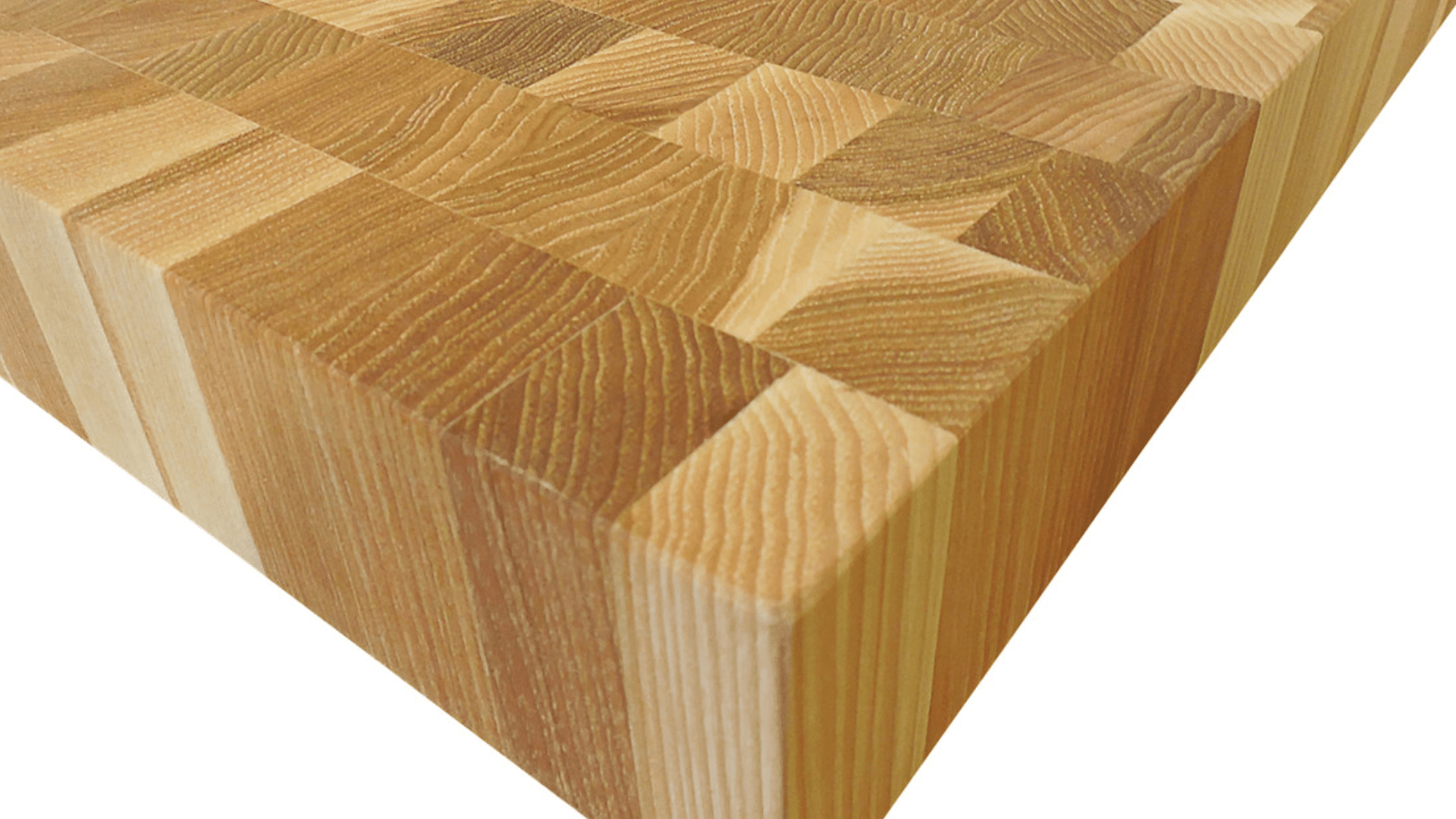
End-grain butcher block stands wood pieces upright, exposing the tree rings on the surface.
The wood fibers close back up after knife cuts, making it self-healing and preferred by serious home cooks.
| Pros | Cons |
|---|---|
| Superior for heavy-duty chopping and cutting | Very heavy, making installation more challenging |
| Creates a distinctive checkerboard visual pattern | Requires more frequent oiling than other types |
| Most durable option for daily kitchen use | It can cost twice as much as edge grain |
| Protects knife edges better during cutting | Limited availability in some wood species |
3. Face Grain Butcher Block
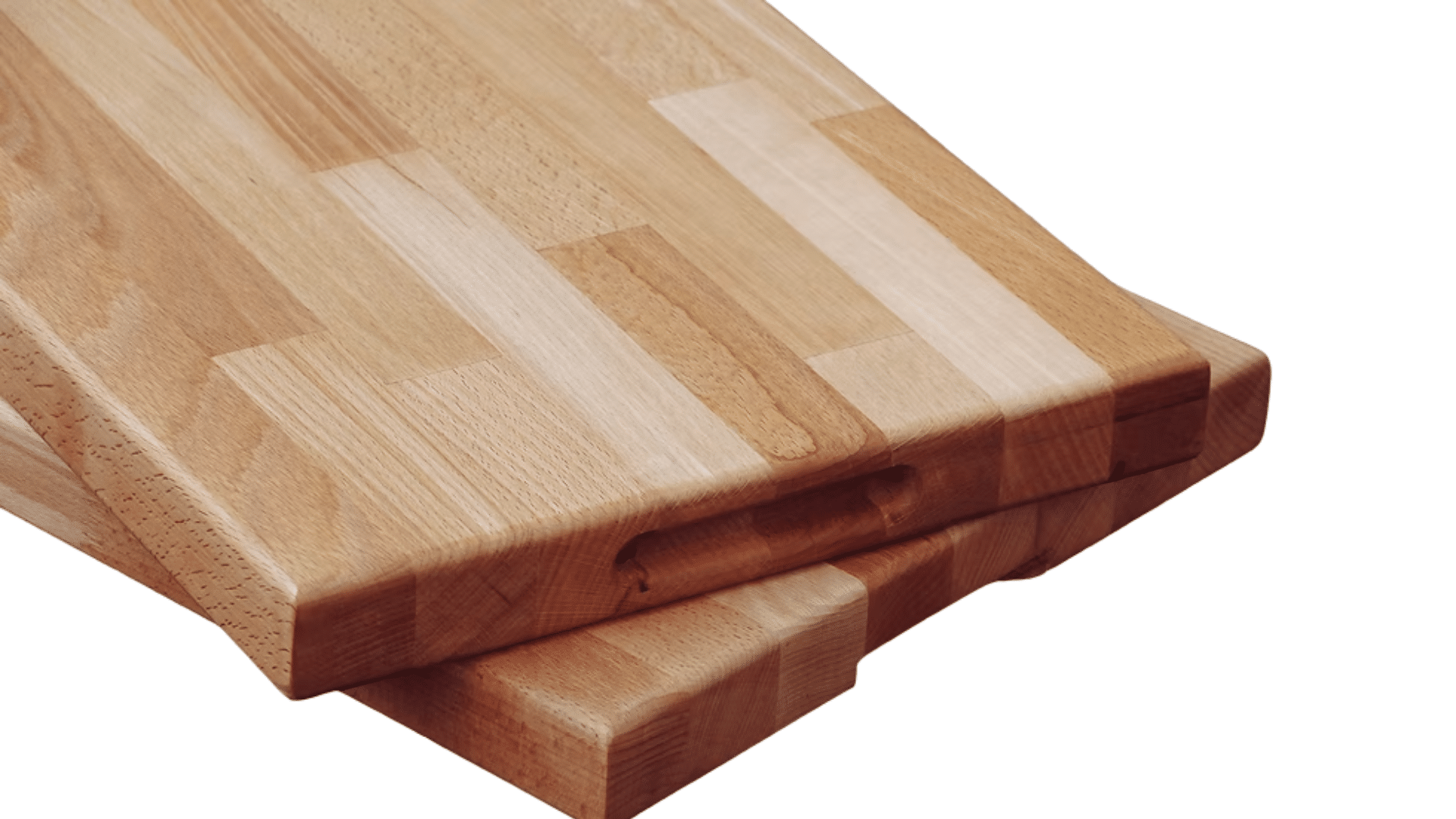
Face grain butcher block lays planks flat, showing the widest part of each board.
It’s less common for countertops, but it offers the most dramatic wood figure and character for those who want visual impact.
| Pros | Cons |
|---|---|
| Generally less expensive than end grain | Shows wear and damage faster than other types |
| Lighter weight makes installation somewhat easier | Requires very gentle use to maintain appearance |
| Creates a stunning visual focal point in the kitchen | Not suitable for use as a cutting surface |
| Good choice for decorative or light-use areas | Needs a protective finish to prevent quick damage |
4. Maple Butcher Block
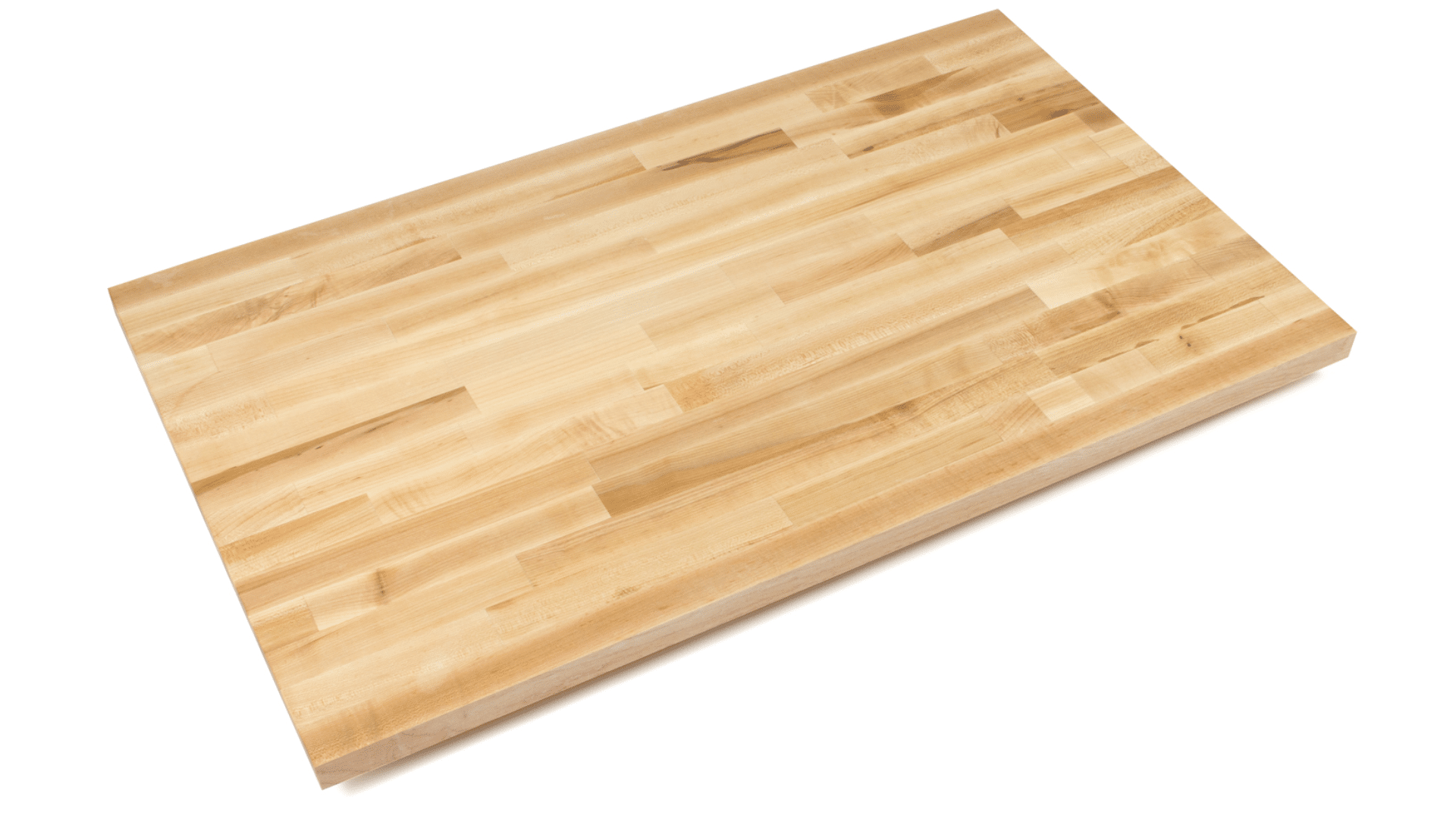
Maple remains the most popular wood species for butcher block countertops.
The light, creamy color brightens kitchens and matches various design styles from traditional to modern without competing with other elements.
| Pros | Cons |
|---|---|
| Hard, dense wood resists dents and scratches | Light color can show stains more easily |
| Naturally antimicrobial properties for food safety | May yellow slightly over time with age |
| Affordable and widely available everywhere | Uniform appearance lacks dramatic grain patterns |
| Accepts stains and finishes evenly | Requires consistent maintenance to prevent darkening |
5. Walnut Butcher Block
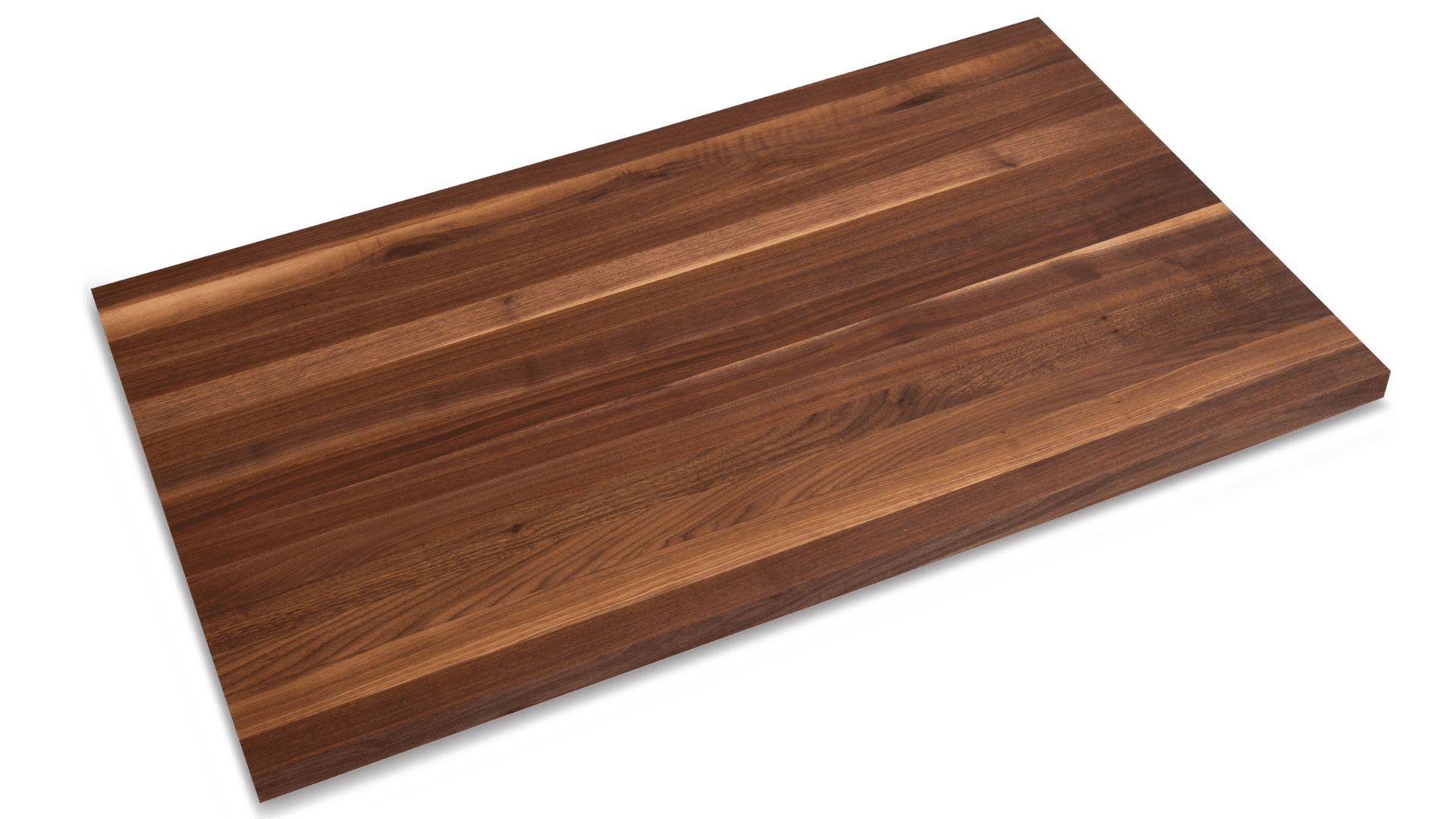
Walnut butcher block offers rich, dark chocolate brown tones that add luxury to kitchens. The wood features beautiful grain patterns with occasional lighter streaks.
| Pros | Cons |
|---|---|
| Beautiful grain patterns add an element | Significantly more expensive than maple options |
| Hides dirt and stains better than lighter woods | Limited availability in some regions |
| Darkens attractively as it ages over time | Color may fade if exposed to direct sunlight |
| Creates a strong design statement in any kitchen | Requires more careful use during food preparation |
6. Cherry Butcher Block
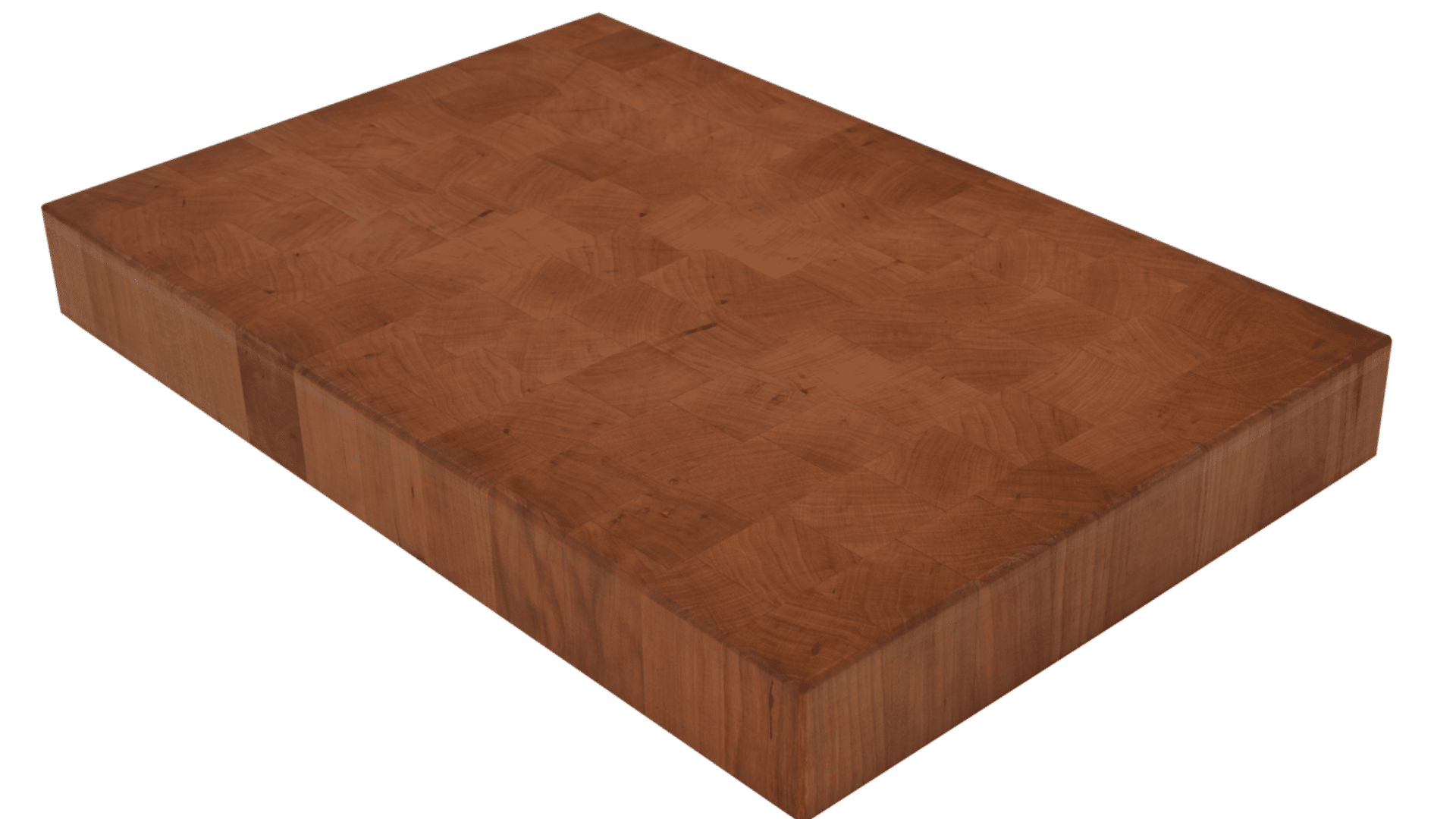
Cherry wood starts with a light pinkish-brown color that deepens to rich reddish-brown over time.
The wood has a fine, smooth texture and moderate hardness that works well for kitchen use with reasonable care.
| Pros | Cons |
|---|---|
| Smooth texture feels pleasant to work on | More expensive than standard maple butcher block |
| Fine-grain resists splintering during use | Color changes may be uneven across the surface |
| Warm tones complement many cabinet colors | Requires protection from direct sunlight for even aging |
| Traditional choice with timeless appeal | It can develop a blotchy appearance if not maintained properly |
7. Oak Butcher Block
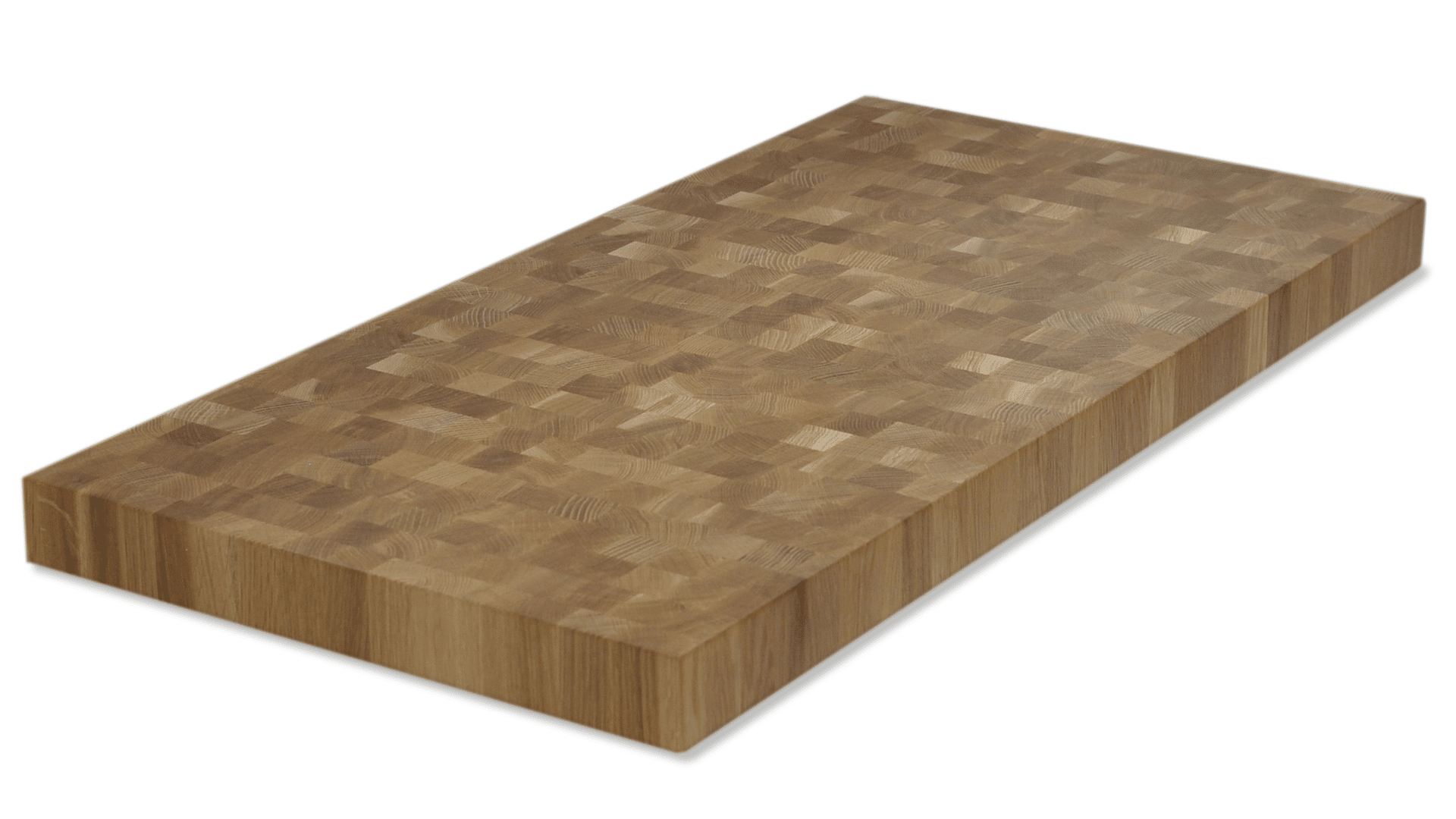
Oak butcher block features prominent grain patterns with visible pores that create texture. The wood comes in red and white varieties, each with distinct color tones.
| Pros | Cons |
|---|---|
| Moderately priced compared to exotic woods | A porous surface can trap bacteria if not sealed |
| Available in both red and white varieties | Shows water damage more quickly than maple |
| Hard enough for regular kitchen tasks | It can be difficult to achieve a smooth finish |
| Strong traditional aesthetic appeals to many | Requires more frequent resealing than closed-grain woods |
8. Bamboo Butcher Block
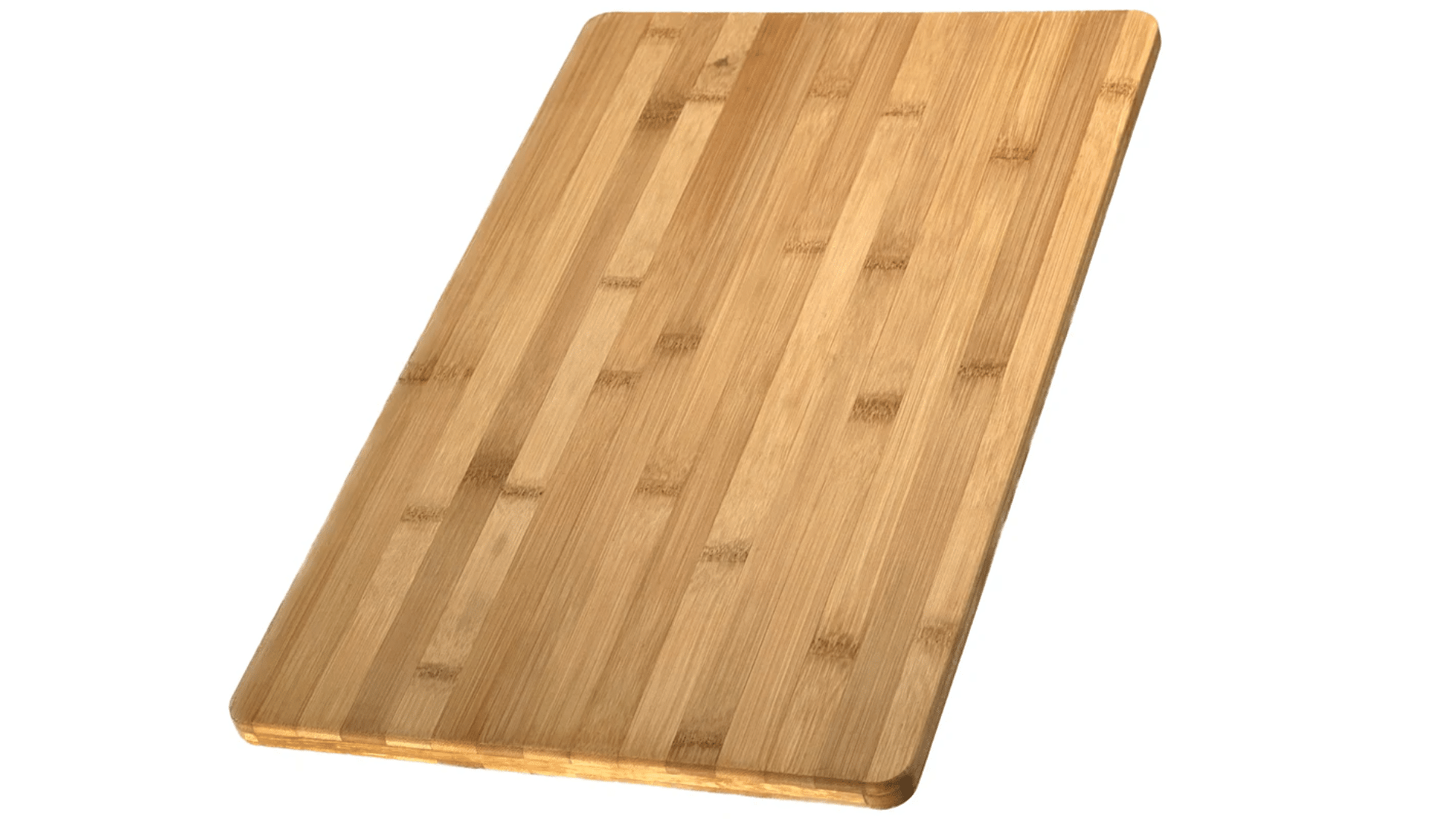
Bamboo technically isn’t wood, but a grass that grows rapidly. It offers an eco-friendly alternative to traditional hardwoods.
The material comes in natural light tan or darker caramelized brown colors achieved through heat treatment.
| Pros | Cons |
|---|---|
| Harder than most traditional hardwoods available | Adhesives used in lamination may contain formaldehyde |
| Modern appearance suits contemporary kitchen designs | Can delaminate if exposed to excessive moisture |
| More affordable than many hardwood options | Limited ability to sand and refinish the surface |
| Naturally resistant to moisture and bacteria | May not accept traditional wood finishes well |
9. Teak Butcher Block
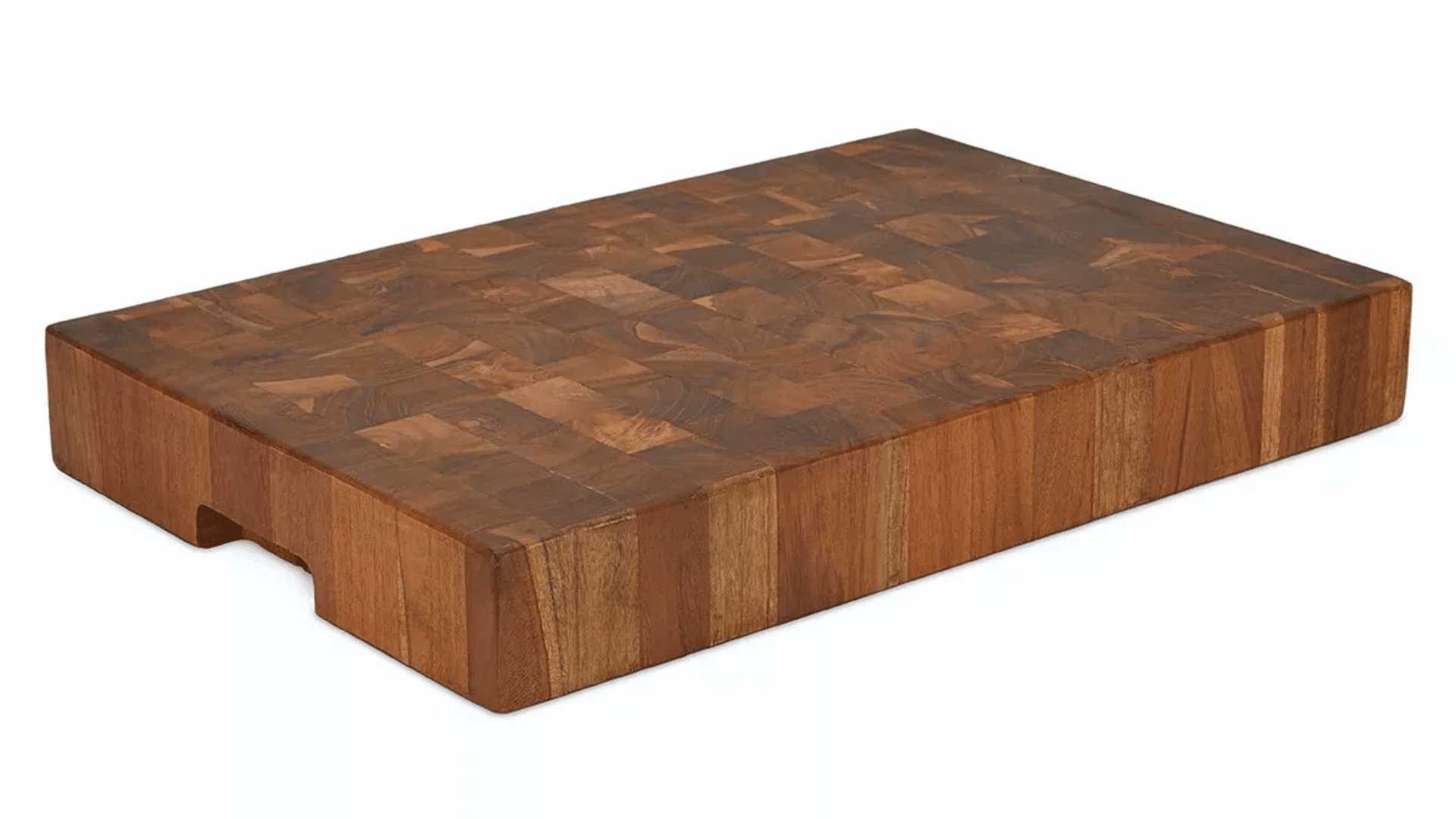
Teak contains natural oils that resist moisture, insects, and decay better than other woods.
Though expensive, teak requires less maintenance than other butcher block options and handles kitchen moisture.
| Pros | Cons |
|---|---|
| Natural oils provide excellent moisture resistance | One of the most expensive butcher block options |
| Requires less frequent oiling and maintenance | Can feel oily or greasy to the touch initially |
| Beautiful golden-brown color stays stable over time | Heavyweight makes installation more difficult |
| Extremely durable for long-term kitchen use | A distinctive smell may bother some homeowners initially |
Reasons to Choose Butcher Block for Your Kitchen Counters
Butcher block countertops offer several advantages that make them popular among homeowners.
These benefits range from cost savings to natural beauty and practical features.
1. Affordable Compared to Stone Options
Butcher block costs less than granite, marble, or quartz. Homeowners can save hundreds or thousands of dollars while still getting quality countertops. This makes kitchen updates more budget-friendly and accessible.
2. Natural Warmth and Character
Wood brings organic beauty that cold stone cannot match. Each board shows unique grain patterns and color variations. The natural material creates a welcoming feel in any kitchen space.
3. Easy to Repair and Restore
Scratches and dents can be sanded out easily. Homeowners can refinish the surface without replacing entire sections. This extends the countertop’s life and keeps it looking fresh.
4. Gentle on Dishes and Glassware
The softer surface prevents chips and cracks in plates. Dropped glasses survive better on wood than on stone. This protection saves money on replacing broken kitchenware over time.
5. Works Well with Many Design Styles
Butcher block fits farmhouse, modern, and traditional kitchens. It pairs nicely with white cabinets or colored ones. The material adapts to different looks without feeling out of place.
6. Adds Resale Value to Homes
Quality wood counters appeal to many buyers. They signal a well-maintained kitchen with attention to detail. This can help homes sell faster and at better prices.
7. Available in Multiple Wood Types
Oak, maple, walnut, and cherry offer different looks. Each wood species has unique colors and hardness levels. Homeowners can choose based on budget and preferred appearance.
Maintenance Tips for These Countertops
Butcher block needs regular care to stay beautiful and functional. Simple routines prevent damage and extend the countertop’s life.
These tips make maintenance easier for busy homeowners.
- Oil the surface monthly: Apply food-safe mineral oil to prevent drying and cracking. This keeps wood moisturized and protected.
- Clean spills immediately: Wipe up water and liquids right away. Standing moisture causes stains and warping over time.
- Use cutting boards for prep: Avoid cutting directly on sealed butcher block. This protects the finish from knife marks.
- Sand out scratches and stains: Light sanding removes surface damage. Follow with oiling to restore the smooth finish.
- Seal unsealed blocks regularly: Apply food-safe sealant every few months. This creates a barrier against moisture and stains.
- Don’t place hot pans directly: Use trivets or hot pads under cookware. Direct heat causes burns and discoloration on wood.
- Maintain even moisture levels: Oil all surfaces equally, including edges. Uneven treatment leads to warping and cracking.
Wrapping It Up
These countertops aren’t a one-size-fits-all solution. Each type brings specific strengths and weaknesses to the kitchen.
The right choice depends on how you cook, budget limits, and maintenance willingness.
Consider lifestyle first, then aesthetics.
The best countertop works with daily habits, not against them. Match the wood type to real kitchen use, and a butcher block can serve well for years.


